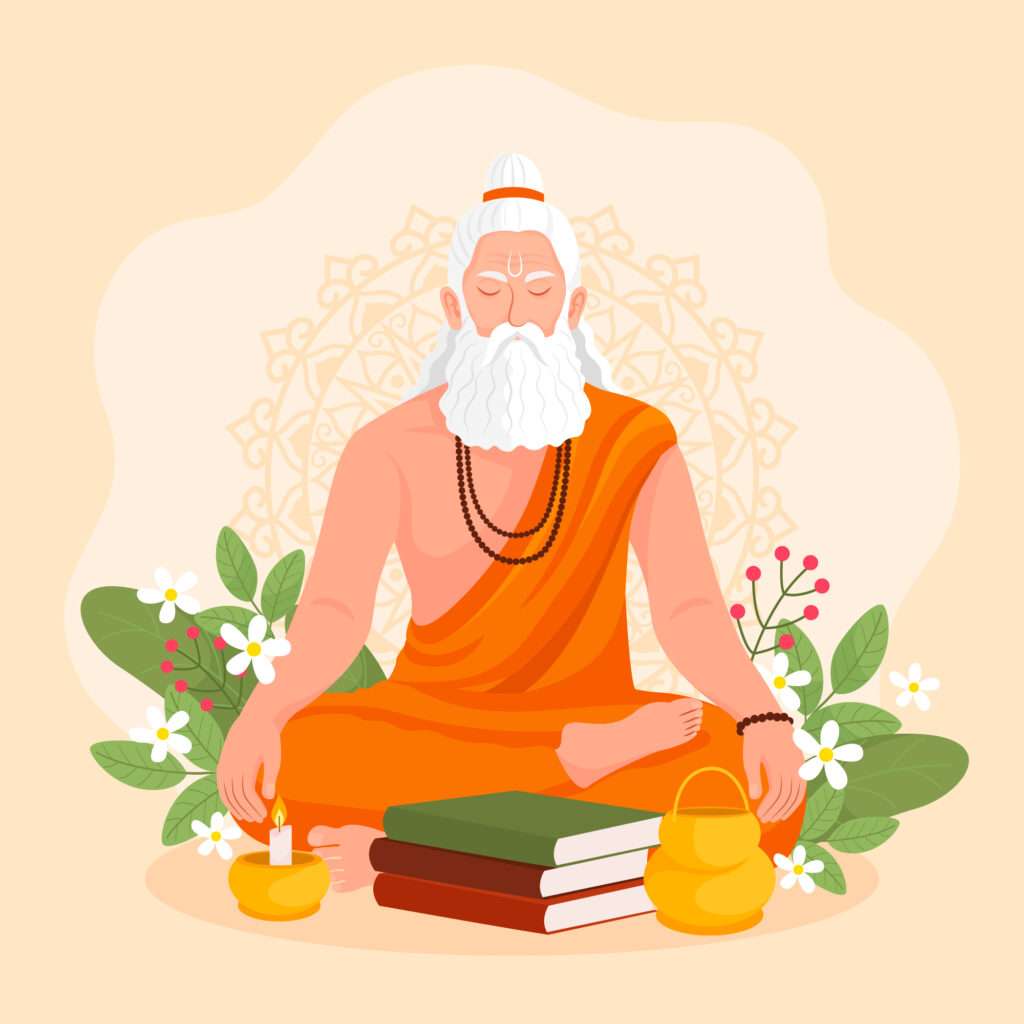Yoga has become a ubiquitous part of modern life, with millions around the world embracing its physical and mental benefits. As we roll out our mats and strike a pose, it’s intriguing to explore the roots of this ancient practice and understand how yoga originated.

Table of Contents
The Ancient Beginnings: How Yoga Originated
Yoga, with its profound impact on physical and mental well-being, traces its roots back to the ancient civilizations of the Indus Valley. Over 5,000 years ago, in the sacred land of India, the foundations of yoga were laid. Although the practice has evolved over millennia, its essence remains deeply rooted in the spiritual and ascetic pursuits of its early practitioners. Lets Explore How Yoga Originated
1. The Birth of Yoga in the Indus Valley Civilization
The story begins in the ancient cradle of civilization, the Indus Valley where evidence shows how Yoga Originated. Archaeological findings reveal seals depicting figures in yogic postures, providing evidence of a civilization deeply connected to spiritual practices. While the exact nature of these early yogic activities is speculative, they lay the groundwork for the spiritual exploration that would later define yoga.
2. Vedic Influences: Rigveda and Upanishads
As the Vedic period dawned, the philosophical foundations of yoga found expression in sacred texts like the Rigveda. The Vedas, comprising hymns and rituals, introduced the concept of “yoking” the mind and body to divine consciousness. The Upanishads, mystical treatises that followed, delved deeper into the nature of reality, the self (Atman), and the ultimate reality (Brahman), laying the groundwork for yogic philosophy.
3. Ascetic Traditions and the Search for Liberation
Yoga’s early practitioners were ascetics who renounced worldly comforts in pursuit of spiritual realization and liberation (moksha). These seekers, known as sadhus and yogis, engaged in rigorous practices to attain mastery over the mind and senses. Their austere lifestyles and commitment to inner exploration set the stage for the transformative journey that yoga offered.
4. Pre-Classical Yoga: The Birth of Patanjali’s Yoga Sutras
The compilation of yogic teachings into a systematic philosophy is credited to the sage Patanjali. In the second century BCE, Patanjali penned the Yoga Sutras & the systematic quest for the how Yoga Originated also finds some cue, a foundational text that outlined the Eight Limbs of Yoga. These limbs, including ethical principles (Yamas and Niyamas), postures (asanas), breath control (pranayama), and meditation, provided a comprehensive guide for spiritual seekers’ Philosophy of Samkhya also provides cue for the question of How Yoga Originated in proto yoga era.
5. Hatha Yoga and the Physical Dimension
While early yoga focused primarily on meditation and spiritual growth, the emergence of Hatha yoga in the Middle Ages introduced a more physical dimension. Hatha yoga sought to balance the dualities within the body, paving the way for the incorporation of asanas or postures. This marked a significant shift, making yoga more accessible to individuals seeking a harmonious union of mind and body.
6. Transmission of Knowledge: Guru-Shishya Parampara
Yoga’s teachings were traditionally passed down through the guru-shishya parampara, an unbroken chain of teacher-student relationships. This oral tradition ensured the authenticity and purity of the knowledge, fostering a deep connection between the teacher and the seeker.
7. Yoga’s Journey Beyond Borders
As centuries passed, knowledge of yoga began to transcend geographical boundaries. Its migration to the West in the 20th century (people in the west fascinated and start querying about how Yoga Originated ), driven by influential yogis like Swami Vivekananda and Paramahansa Yogananda, marked a new chapter in yoga’s global journey.
Conclusion
The journey of yoga, from its ancient roots to its global presence today, reflects its adaptability and timelessness. As we continue to explore the question about How Yoga Originated, let’s appreciate its profound impact on physical, mental, and spiritual well-being.
FAQs
1. Is yoga a religious practice?
- No, yoga is not inherently a religious practice. While it has historical connections to Hinduism, yoga has evolved into a diverse set of practices accessible to people of various beliefs.
2. Can anyone practice yoga?
- Yes, yoga is inclusive and can be practiced by individuals of all ages and fitness levels. Beginners should start with basic poses and gradually progress.
3. How often should one practice yoga?
- The frequency of yoga practice depends on individual preferences and schedules. Consistency is more important than intensity, so find a routine that suits your lifestyle.
4. Are there health benefits to practicing yoga?
- Yes, numerous studies highlight the physical and mental health benefits of yoga, including improved flexibility, reduced stress, and enhanced overall well-being.
5. What is the best time to practice yoga?
- The best time to practice yoga varies among individuals. Some prefer mornings for a revitalizing start, while others find evenings more suitable for relaxation.